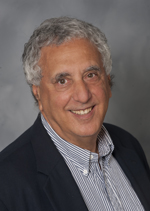By Donald H. Harrison

CAPE CANAVERAL, Florida — The excitement was palpable in the hours on Sunday, June 28, before the ill-fated launch of the Falcon 9 Dragon rocket that was supposed to bring supplies and new science experiments for the astronauts aboard the International Space Station.
Elementary, Middle and High School students from all over the country, whose projects had been culled from thousands of entrants, were about to see the realization of many hours of team work when the Falcon rocket would carry experiments of their design to the space station for the astronauts to carry out as part of a broad national program to provide students with real-life experiences with the sciences.
Most of the experiments dealt with the effects of micro-gravity on various processes. For example, one set of students had set up a test in which astronauts would determine whether the production of artificial insulin would take more time, less time, or the same time in space as it does on Earth. The reason for such an experiment? If it takes less time, or even the same amount of time, it may prove wise to carry the ingredients on space missions involving diabetic astronauts.
From a double set of bleachers at the Kennedy Space Center’s visitors center, the students joined tourists and other spectators scanning the sky to see the rocket being launched some 11 miles away. Their cameras and videotapes were at the ready; their parents and teachers beamed with pride.
Initially, the launch appeared to be going well, and there even was applause and cheers in the lay audience. But then came the announcement from mission control of the National Aeronautics and Space Administration. There had been a failure, the announcement said, meaning that the rocket had disintegrated in a terrible explosion. Everyone watching from the bleachers was instructed to leave the area immediately and to go inside one of the nearby buildings. There was fear that shrapnel from the explosion could fall on the visitors center, which did not occur.
Dr. Jeff Goldstein, director of the National Center for Earth and Space Science Education, said unlike the last time a rocket carrying student experiments failed in October 2014 — Orbital’s Antares, which blew up in even less time after the launch — the students were not together in the same place. With everyone told to scatter into buildings, Goldstein said, he was unable to observe the students’ reactions as he had with the earlier mission. By the time this group of students reassembled approximately two hours later, much of the emotion had been tamped down.
Goldstein said that one way or another the experiments designed by the students will be launched into space, but for the moment at least when that could occur is uncertain.
My grandson Shor and my friend of more than 60 years standing, Amnon Markusfeld, now of Oviedo, Florida, had joined me at the presentation by the student scientists, and we later watched the launch together. Even though no humans were aboard the Falcon 9 Dragon — not like the horrible explosions of the Space Shuttle Challenger in 1986 and the Space Shuttle Columbia in 2000, each of which took the lives of seven astronauts — we felt sadness over the explosion. We empathized with how shocked and disappointed these enterprising students and their families must have felt.
Yet, life quickly returns to normal, even at the sites of disasters. One of the activities we had arranged to attend at the Kennedy Space Center was a luncheon speech by astronaut Tom Jones, who had flown four NASA missions. His jocular presentation dealt mainly with the food that astronauts eat in weightless conditions and the methods NASA has devised to deal with human waste, including extracting potable water from urine. “Take another sip!’ he wisecracked to those at the buffet luncheon.
Afterwards we walked through a hallway in which the astronauts of both Challenger and Columbia were memorialized. Coincidentally, there was a Jewish astronaut aboard the shuttle crafts in each of those tragedies–Judith Resnik aboard Challenger and Ilan Ramon,, Israel’s first astronaut, aboard Columbia.
The exhibited included the words spoken both by Presidents Ronald Reagan and George W. Bush after the 1986 and 2003 explosions respectively.
Reagan said: “The future doesn’t belong to the fainthearted, it belongs to the brave.”
Bush said: “America’s space program will go on. This cause of exploration and discovery is not an option we choose, it is a desire written in the human heart.”
I don’t know if the students had a chance to go through that exhibit. But if they did, I hope the two U.S. Presidents’ words will give them both comfort and perspective.
*
Harrison is editor of San Diego Jewish World. You may comment to him at donald.harrison@sdjewishworld.com, or post your comment on this website provided that the comment is civil and you identify yourself by full name and your city and state of residence.